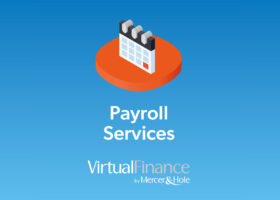Parents often want to help their children buy a first property but that is sometimes mixed with concern about the potential risk of losing some of the family wealth – for example, if the child enters a relationship that fails with the risk that some assets are shared with the partner. For the purposes of this article, the child is aged 18 or over.
Below, I have highlighted some of the options that can be considered. All have their merits for different reasons. In practice, the objective to preserve wealth long term often trumps some of the tax considerations when it comes to deciding just what to do.
Gift of cash sum to child
Parents can make a simple unconditional gift of cash to the child to enable the child to have a sufficient deposit or full funding to buy the property. The child would be the sole owner and the acquisition is funded with the cash plus a commercial bank loan, if required.
This is simple and transparent. There are additionally some Inheritance Tax (IHT) benefits to be obtained by this strategy, subject to certain conditions being met:
Potentially Exempt Transfer (PET)
The gift is a PET and falls out of the parent’s estate for UK Inheritance Tax (IHT) purposes in full after seven years have passed from the date of the gift. The parents must not receive a benefit out of the sum given away and the parent’s estate then saves IHT at 40% on the value of the gift after the full seven years.
Capital Gains Tax (CGT)
Assuming the child occupies the property as his or her main residence, throughout the child’s period of ownership, any capital gain arising on disposal of the property will be exempted from CGT by Principal Private Residence Relief (PPR). Periods of ownership not occupied by the owner will not be exempted, although further reliefs, not covered here, may be available.
The key disadvantage is the outright control and ownership it gives the child. If the child enters a relationship that later breaks down, there is a risk of assets being lost to the estranged partner. Outright ownership also gives the child power to sell the asset whenever he or she wishes. It is this aspect that has the potential to be the subject of conflict on a practical level.
Joint ownership
If a property is partly owned by the parents and partly owned by the child, then in the event of a relationship breakdown for the child, the part owned by the parent or parents is likely to be protected, assuming the property was acquired well in advance of the relationship breakdown.
Also, a property owned by more than one person can only be sold by agreement of all owners. Therefore, if the parents own an interest in the property and the child owns the remainder, the child cannot single-handedly sell or mortgage the whole property.
The drawback is the absence of PPR relief in relation to the part owned by the parent. Any gain arising on a disposal of the parents’ interest during their lifetime will therefore attract CGT at 28% (at current rates).
Although not covered by this article, the Stamp Duty Land Tax (SDLT) implications of parents acquiring an interest in a second property must also be considered when assessing the assets involved.
Due to the SDLT complications, joint ownership is sometimes approached by way of the parents making just a loan to the child and taking a charge over the property rather than anything else. This is very simple to achieve and ensures the parents get their money back in the long run.
However, the cost of protecting the parents’ wealth like this is continued IHT exposure for them. The property interest owned by the parents or the loan receivable by them is still part of the parents’ own estate for IHT purposes and will attract IHT at 40% on their deaths without further planning.
Buying a house in trust for a child
A family trust may already exist in which case it is worth considering acquisition of the property by that vehicle, if the trustees have sufficient cash to fund it. Trustees usually find it more difficult to obtain commercial bank mortgages and so in practice, this option works best where the trustees can buy the asset outright with cash they already have. The trust I refer to here is a UK trust, of which the settlor is specifically excluded and trustees have discretionary powers over all beneficiaries.
If there is not an existing trust, the parents could create a trust by each making a life time transfer of £325,000 (£650,000 in total) to a trust to fund it, subject to not having made transfers in the previous seven years. The sums transferred are chargeable lifetime transfers and therefore, if the parents transfer more than their nil rate bands for IHT, the excess would be subject to an IHT charge of 20% at the time of transfer.
If the property cost more than the total sums transferred, then it is better to transfer the balance by way of loan, if the parents have the cash available to do so. A loan is not a chargeable transfer but must be properly legally documented with repayment terms.
The big advantage of a trust is that it is a completely separate vehicle enabling family wealth to be ring-fenced and protected. This is extremely helpful in alleviating some of the concerns described with direct ownership over outright control.
In this respect, a trust can provide the best of both worlds – the trustees can allow the child to occupy the property and even pay all property maintenance costs for him or her but the child neither owns nor has direct control of the property.
Provided the settlor(s) are specifically excluded from benefit, trust property is also not part of the beneficiaries’ own estates for IHT purposes. It belongs to the trustees and there are IHT consequences for them.
The trustees are subject to a charge to IHT on every 10th anniversary of the trust in respect of their chargeable relevant property. This is the ’10-year charge’ that, very broadly, amounts to 6% of the value of chargeable trust assets held on that occasion.
However, this is nowhere near the IHT rate of 40% on death if the property is held in a person’s own estate but it does accelerate a tax charge at a time when there may otherwise not have been a charge at all.
If the trustees ever decide to appoint the property out to a beneficiary, an IHT exit charge arises on the trustees as property is leaving the trust. The actual calculation can be complex, but the rate charged does not exceed 6% at an absolute maximum and is often much less than this.
The trustees are also likely to qualify for PPR exemption as long as they grant the beneficiary a right to occupy the property and they do so as their main residence for the entire period of ownership. Given that trusts are used for asset protection, appointment of the asset is not usually on the agenda, at least in the short or medium term.
Longer term, there could potentially be other taxes to consider. For example, if the property is put to another use, such as being let out by the trustees, the trustees will pay income tax on the rental
profits at the highest rate of income tax, currently 45% and CGT on any chargeable gain arising in the year of disposal is charged at 28%.
With all this in mind, for family trustees who can afford to fund a property acquisition, it is important to understand the short- and long-term objectives for the property before embarking on this strategy. For cases where it is appropriate, the trust can work very well indeed.
Acquisition by a family investment company
It is widely regarded that ownership by a company of residential property for one’s occupation is unattractive if considered solely from a tax perspective. This is essentially because a company owning a UK residential property is subject to the Annual Tax on an Enveloped Dwelling (ATED), a charge which is set in line with the valuation bandings for the property.
In a nutshell, all residential property worth more than £500,000 at 1 April 2017 is subject to an annual charge starting at £3,600 for 2018/19, which this goes up to £226,950 for properties worth more than £20m. The SDLT payable by a company acquiring a UK residential property worth more than £500,000 for occupation is generally punitive at the rate of 15% and on top of this, the individual in occupation will have a benefit-in-kind charge on the benefit of rent-free occupation.
However, there is relief from the ATED charge where a property is rented out on arm’s length terms to an unconnected third party. Companies also pay corporation tax on their rental profits, which is lower than the current rates of income tax – the rate of corporation tax is currently 19% and will be reduced to 17% from April 2020.
For IHT purposes, each shareholder has IHT exposure only in relation to their shareholding in the company and the value for minority shareholders can carry a discount so exposure to IHT on the overall company value can result in being favourably split across family members.
Despite these potentially positive points, considering all of the above, unless the property is modest in value and likely to be rented out, this option is not going to be as attractive as some of the others but ought not to be dismissed without due consideration.
What is best?
There is no single answer and the most appropriate solution will depend on the overall family circumstances and willingness to accept the particular tax costs attached to the chosen solution.
Asset protection will best be met with a trust and the tax costs are probably manageable.
Relatively speaking, the 6% IHT anniversary charge is modest and much better than 40% on death if held personally.
CGT relief is available provided the beneficiary occupies it so is the same as if it were held personally. There may be more SDLT to pay on acquisition by a trust than directly by the child and there will also be some administration costs associated with running the trust.
With high property prices, the cost of making a bad choice is going to hit hard. Some tax charges arise and operating costs arise for the trustees but in the end these are a financial expectation and necessity to protect big family wealth.
Funding a trust to a level that can meet the financial cost of property acquisition will take time so early planning is essential and full advice should always be sought in advance.
Options in brief
Detailed below is a brief summary comparison of the taxes under the options outlined in this article:
Personal ownership – child and/or parent
IHT: yes, 40% on death in the individual owner’s estate
CGT: yes, 28% unless PPR relief exempts whole or part of the gain
Income tax: yes, if property is later rented out and give rise to rental profits IT is charged at individual’s marginal personal tax rate. Tax rates 20%, 40% or 45%
SDLT: yes (rates vary)
Trust ownership
IHT: yes, for trustees 10 year and exit charges, but maximum rate of 6%. No 40% rate
CGT: yes, same as above, 28% unless PPR exempts whole or part of gain
Income tax: trustees pay income tax at 45% on rental profits
SDLT: yes (rates vary)
Family investment company
IHT: yes, 40% on value of company shares held by shareholder at individual’s death
CGT: no
Corporation Tax: gains taxed within company profits. CT rate is currently 19%.
Income tax: no
SDLT: yes, 15% if property worth more than £500,000 and rates vary.
If you would like to discuss this matter in relation to your personal circumstances, please get in touch with me or your usual partner at Mercer & Hole.







 7 mins
7 mins 

